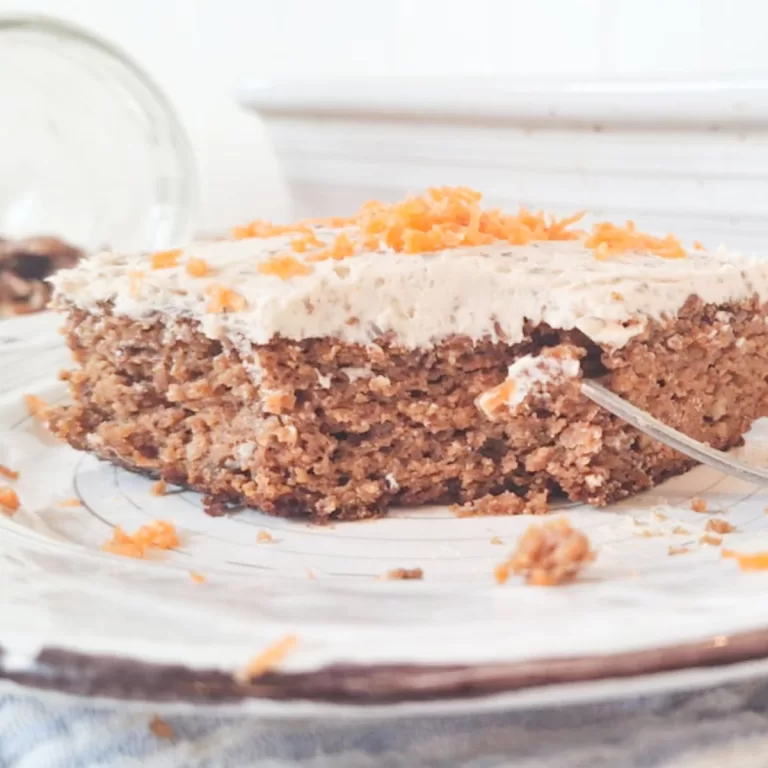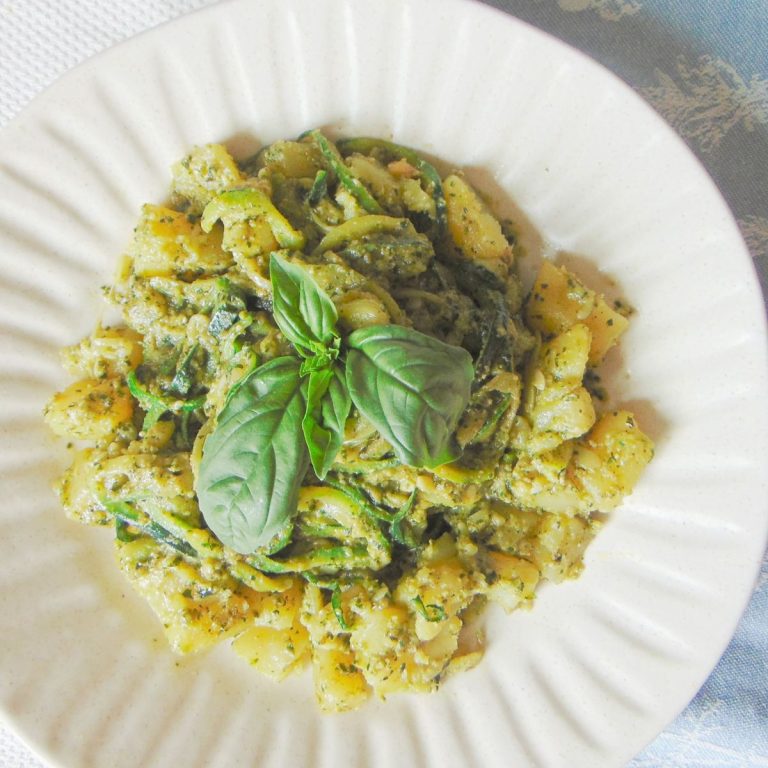Learn how to make lacto-fermented onions. Lacto-fermenting is a simple, traditional method that makes onions more digestible, boosts their nutritional value, and adds gut-healthy probiotics to your diet, all while preserving your harvest.

Disclosure: as an Amazon Associate, I earn a small commission from qualifying purchases at no extra cost to you. Read my full Disclosure and Policy here.
Lacto-fermented onions are one of the easiest ferments to make at home, and they’re delicious, gut-healthy, and very affordable. With just onions, salt, and water, you can turn this everyday vegetable into a probiotic-rich staple that’s tangy, mildly sweet, and endlessly versatile. They’re perfect for topping sandwiches, burgers, salads, bowls, and more.
Health Benefits of Lacto-fermented Onions
Like all fermented vegetables, lacto-fermented onions are rich in live probiotics, which support a healthy gut microbiome. But onions themselves also bring powerful health benefits to the table, and fermenting improves their benefits and digestibility.
- Probiotics supports gut health. Lacto-fermenting bacteria are natural probiotics that can improve gut-health and boost the immune system.
- Onions are naturally antimicrobial and anti-inflammatory. Onions contain compounds like quercetin and sulfur that have natural antibacterial and anti-inflammatory properties.
- Fermentation makes onions more digestible. Onions are naturally rich in fructans, one of the FODMAPs that are hard to digest by people with Irritable Bowel Syndrome (IBS). Fermenting helps breaking down these complex carbohydrates making them more digestible even by those suffering from IBS (source).
- Fermentation improves nutrient availability. Fermentation helps increasing the availability of certain vitamins and minerals in foods .Fermenting onions has been shown to enhance onion’s antioxidant activity and the availability of bioactive compounds such as flavonoids and short-chain fatty acids (source) that contribute to overall health.
Lacto-fermenting onions and other vegetables is also a great way to increase their shelf life and preserve your harvest!

If you want to try more lacto-fermented, gut-healthy veggies, try this fermented carrots with ginger recipe and this super colorful fermented coleslaw. Also try my Bulgarian Yogurt in the Instant Pot, a delicious and creamy source of probiotics!
How to Use Lacto-Fermented Onions
Lacto-fermented onions add a bright, tangy flavor to just about any savory dish. Here are a few ways to use them:
- As a side dish for meat or fish. Pairs really well with organ meats thanks to their freshness
- As a topping for burgers, tacos, or sandwiches
- Mixed into salads, grain bowls, or slaws
- Stirred into scrambled eggs or omelets
- Added to charcuterie or cheese boards
- On top of soups or roasted veggies for a flavorful garnish
To fully benefits from the probiotic benefits of fermented onions, just make sure not to cook them, as the heat will kill the beneficial bacteria!

Lacto-Fermented Onions FAQs
Are lacto-fermented onions good for you?
Yes! They combine the natural benefits of onions with the gut-healthy probiotics from the fermentation process, potentially improving gut-health and immunity. By breaking down hard-to-digest carbohydrates and FODMAPs, fermentation even makes onions more digestible for those with IBS. Of course, if you are allergic or intolerant to onions, this recipe might not be for you.
What do fermented onions taste like?
Fermented onions have a bright, tangy flavor with a mild (or more pronounced, depending on how long you ferment them) sour kick. They’re much milder than raw onions, with a subtle sweetness and a pickle-like zing. The fermentation process softens their sharp bite and transforms them into a delicious, complex condiment. It’s hard to describe the exact flavor, so you’ll just have to try them and see for yourself!

Are fermented onions and pickled onions the same?
No. While lacto-fermenting simply involves submerging onions in a brine made with water and salt to enable lacto-fermenting bacteria present on the onions to multiply, pickled onions are preserved with vinegar and often sugar. Pickled onions are shelf-stable and acidic, while lacto-fermented onions are probiotic-rich and require refrigeration after fermenting.
Can fermented onions go bad?
Yes, though it’s rare if stored properly. Watch for:
- Foul or rotten smells (different from tangy or sour)
- Mold growing on the surface (white kahm yeast is harmless, but fuzzy mold is not)
- Sliminess or a drastically off texture
Always store your fermented onions in a sealed jar in the refrigerator once fermentation is complete. In proper conditions, fermented onions can last up to 6 months.
Do I need whey or probiotic starter to lacto-ferment vegetables?
Nope! Onions (like most vegetables) have natural lactic acid bacteria on their surface. All you need to ferment onions is salt, filtered water, and time! If desired, you can add a probiotic starter like whey from straining yogurt or some liquid from other fermented foods like sauerkrauts. This will speed up the fermentation process, but it’s not necessary. Using whey for lacto-fermenting vegetables can also make their texture more “slimy” and increase the chances of mold.
Ingredients for these Lacto-Fermented Onions

Onions. You can use any kind of onions for fermenting. Use red onions for a bolder flavor, and beautiful color. Yellow and sweet onions have a milder and sweeter taste, while white onions have a sharper taste and stay more crunchy.
Brine. Made from sea salt and filtered water (the chlorine will kill the bacteria). Use about 5 teaspoons of salt per liter of water. I like using Redmond Real Salt for its unique health benefits and taste.
Herbs and/or spices (optional). For an extra boost of flavor, you can add your favorite herbs of spices. For this recipe, I used terragon, black pepper, and mustard seeds to add a mild heat and tang to these onions.
Tools you May Need
Cutting board and knife(s).
Wide mouth mason jars (16-oz size).
Fermentation weights or clean small jars to hold carrots under the brine.
Fermentation lids or regular mason jar lids.
How to Make these Lacto-Fermented Onions
Step 1: Make a brine by dissolving 5 teaspoons of salt in 1 liter (about 4 cups) of filtered water. Warm up a portion of the water to help dissolve the salt, then add the remaining water. Stir well and let the brine cool to room temperature.
Step 2: Peel your onions and slice them into medium-thin rounds or half-moons, depending on your preference.
Step 3: Pack the sliced onions tightly into clean jars. Add any optional herbs or spices, then pour the brine over the onions until fully submerged.

Step 4: Use fermentation weights, a clean jelly jar, or a slice of onion to weigh the onions down and keep them completely submerged under the brine.

Step 5: Close the jars loosely with lids, or use fermentation lids. Place the jars on a dish or tray to catch any brine that may overflow during fermentation.
Step 6: Let the onions ferment at room temperature for about 1 to 2 weeks, depending on the temperature of your home. Burp the lids daily (if using regular lids) and check to ensure the onions stay submerged. Press down and add more brine if needed. Begin tasting after a few days to determine when the flavor and texture are just right for you.
Step 7: Once fermented to your liking, seal the jars tightly and move them to the refrigerator. The onions will keep for several months, becoming more mellow and complex over time.

If you try these fermented onions, I’d love to hear from you! Drop a comment below and let me know your favorite way to consume them. And if you enjoyed the recipe, don’t forget to leave a 5-star review!
Pin it for Later

Related Posts and More Recipes from the Blog
Fermented Carrots and Ginger Two-Way Recipe
Fermented Coleslaw: Easy and Delicious Gut-Healthy Recipe
Why your Gut Health is Important and How to Improve it Naturally
The Benefits of Eating Collagen and Gelatin
Bulgarian Yogurt in the Instant Pot Recipe
Printable Recipe Card

How to Make Lacto-Fermented Onions
Equipment
- Cutting board and knife(s).
- Wide mouth mason jars (16-oz size).
- Fermentation weights or clean small jars to hold carrots under the brine.
- Fermentation lids or regular mason jar lids.
Ingredients
- 3 medium-size onions
- 1 liter filtered water
- 5 tsp (~30 grams) sea salt
- 1/2 tsp dry terragon or thyme optional
- 1/4 tsp crush black pepper optional
- 1/4 tsp mustard seed powder optional
Instructions
- Make a brine by dissolving 5 teaspoons of salt in 1 liter (about 4 cups) of filtered water. Warm up a portion of the water to help dissolve the salt, then add the remaining water. Stir well and let the brine cool to room temperature.
- Peel your onions and slice them into medium-thin rounds or half-moons, depending on your preference.
- Pack the sliced onions tightly into clean jars. Add any optional herbs or spices, then pour the brine over the onions until fully submerged.
- Use fermentation weights, a clean jelly jar, or a slice of onion to weigh the onions down and keep them completely submerged under the brine.
- Close the jars loosely with lids, or use fermentation lids. Place the jars on a dish or tray to catch any brine that may overflow during fermentation.
- Let the onions ferment at room temperature for about 1 to 2 weeks, depending on the temperature of your home. Burp the lids daily (if using regular lids) and check to ensure the onions stay submerged. Press down and add more brine if needed. Begin tasting after a few days to determine when the flavor and texture are just right for you.
- Once fermented to your liking, seal the jars tightly and move them to the refrigerator. The onions will keep for several months, becoming more mellow and complex over time.






